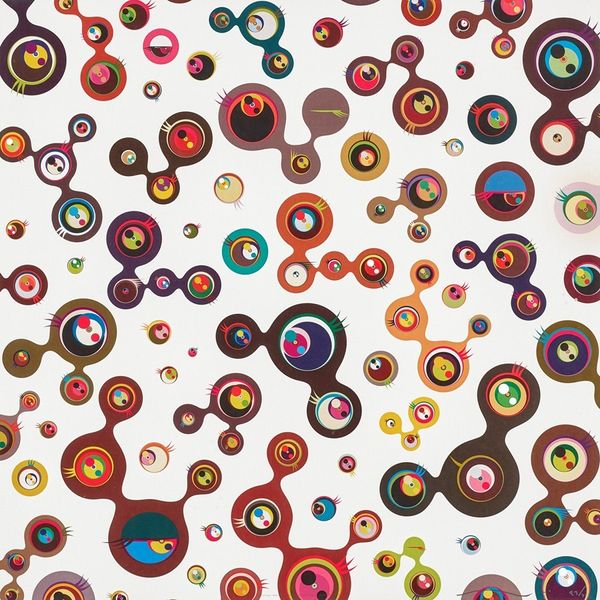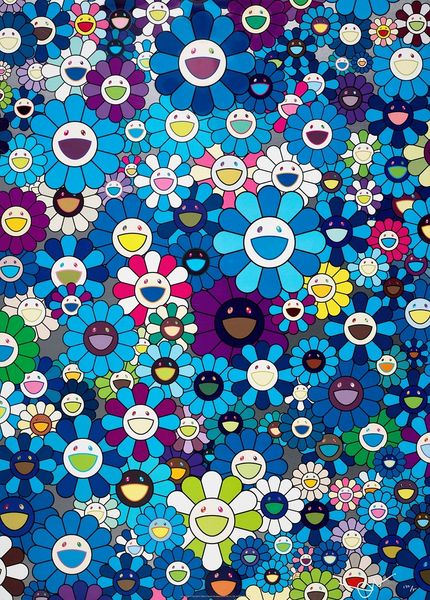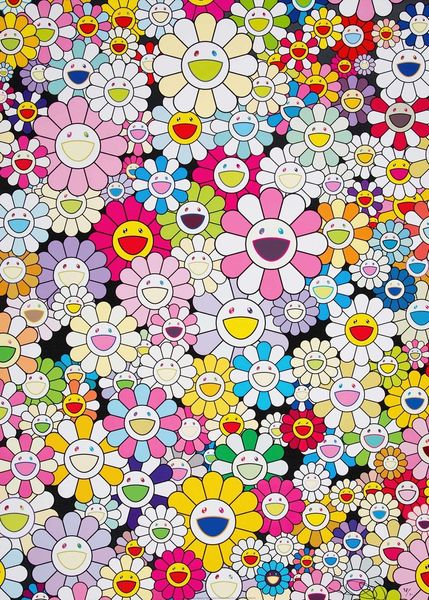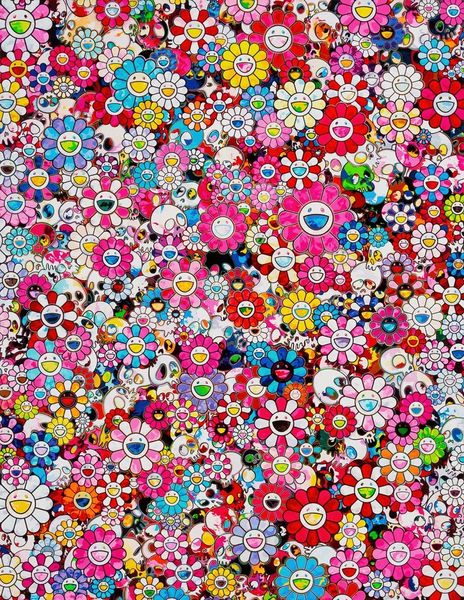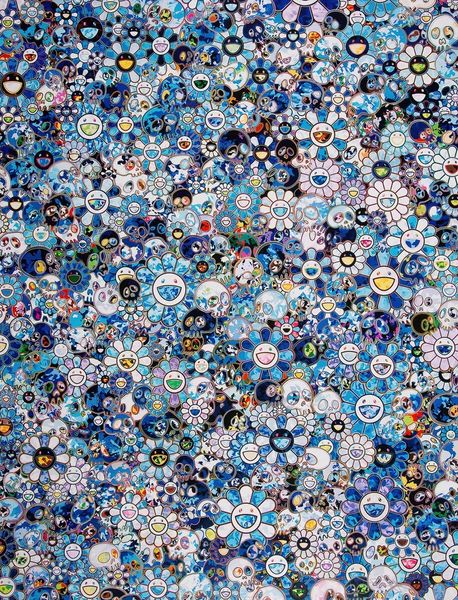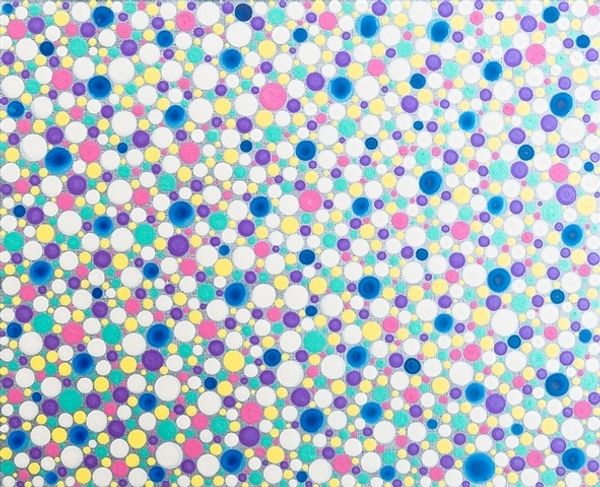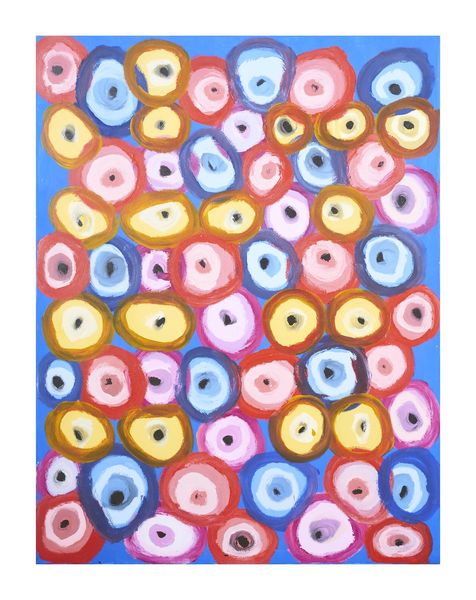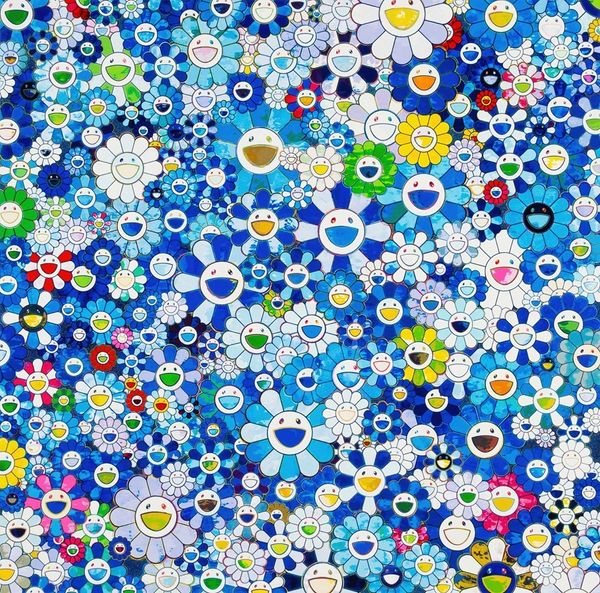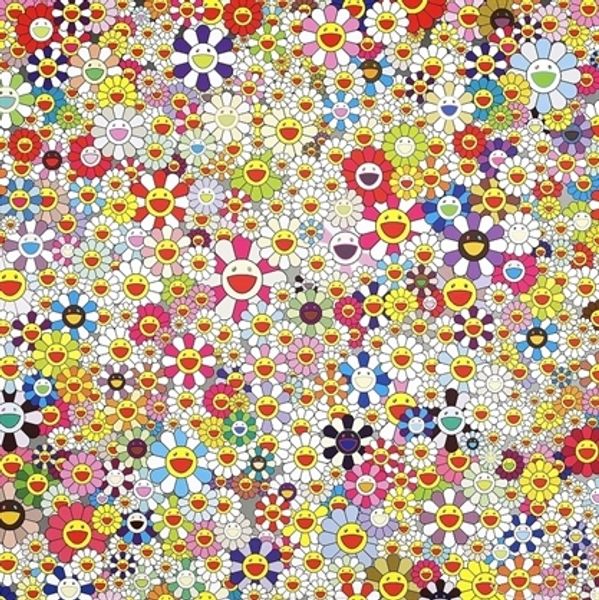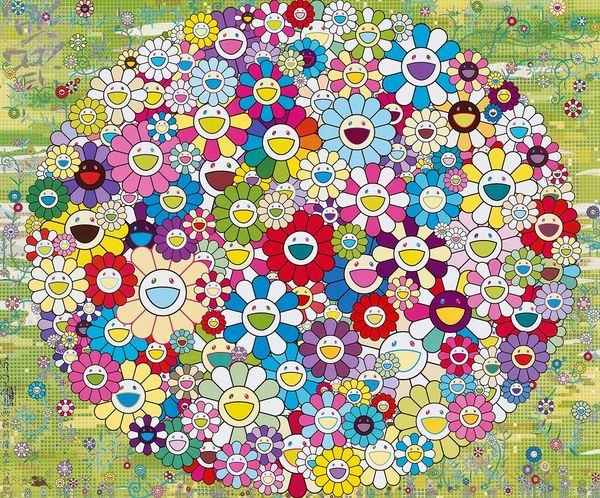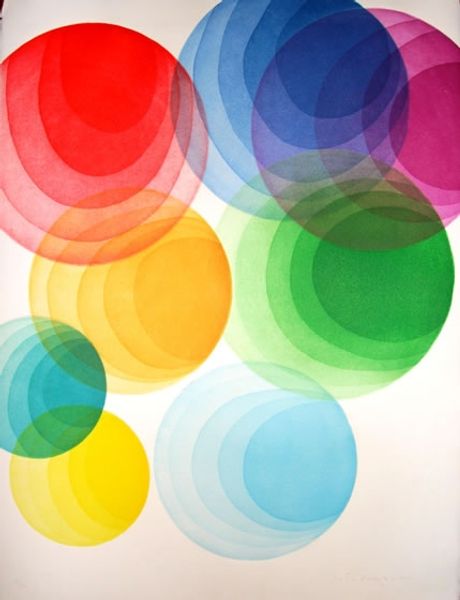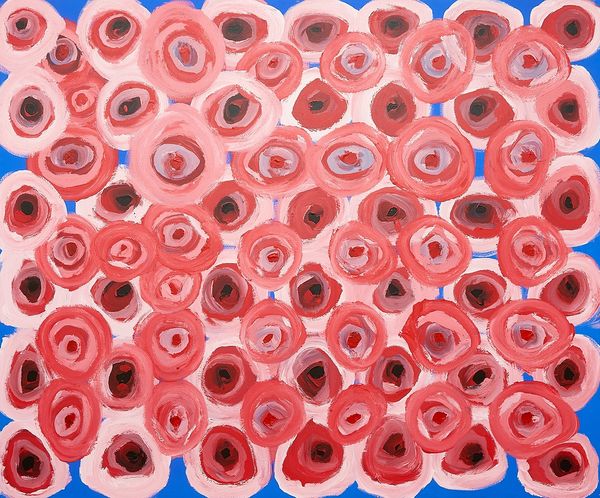
painting, acrylic-paint
#
naturalistic pattern
#
contemporary
#
organic
#
random pattern
#
painting
#
acrylic-paint
#
geometric pattern
#
abstract pattern
#
minimal pattern
#
organic pattern
#
flower pattern
#
abstraction
#
pattern repetition
#
layered pattern
#
funky pattern
Copyright: Sally Gabori,Fair Use
Editor: This acrylic on canvas, "All the Fish" painted by Sally Gabori in 2005, feels almost like looking at a vibrant coral reef. The repeated circular forms create a lively and abstract scene. How do you interpret this work, considering its historical context? Curator: Gabori started painting quite late in life, and her art quickly gained recognition. Thinking historically, it’s interesting to consider how indigenous Australian art has been traditionally viewed and collected. How might Gabori's late entry and rapid success challenge those established narratives of what "authentic" Indigenous art should be? Editor: That's a really interesting point! So, her work disrupts those preconceived notions of a linear, historical progression. Is there also a political aspect to this vibrancy and abstraction, considering the historical marginalization of Indigenous voices in the art world? Curator: Absolutely. Gabori's bold use of colour and abstraction, rather than fitting into stereotypical expectations, can be seen as a powerful assertion of cultural identity. The work operates on multiple levels; it references her ancestral lands but through her own unique visual language. What does that tension mean to you? Editor: I think that her use of personal visual language allows for her work to reach audiences both familiar and unfamiliar with indigenous art. This tension elevates it from merely being representational into being interpretive and deeply meaningful. It avoids a purely ethnographic reading. Curator: Precisely. The fact that Gabori didn't start painting until later in life also complicates the narrative of artistic "genius." Her success underscores the crucial role that art institutions and the market play in shaping perceptions of artistic value and cultural authenticity. Editor: This has completely changed how I see the painting. The vibrant colors and simple forms become more than just aesthetically pleasing, they represent Gabori’s assertive reclamation of cultural identity and a disruption of traditional art narratives. Curator: Indeed. It pushes us to question how art history has been written and whose voices have been amplified, or suppressed, along the way. A seemingly simple painting can spark quite the complex discussion.
Comments
No comments
Be the first to comment and join the conversation on the ultimate creative platform.
